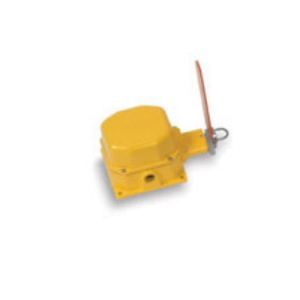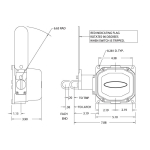Rees 04953-113 Cable Operated Switch, NO+NO
- Specification
- Overview
- Customers Also Bought
- Your Recently Viewed Items
- Reviews



Overview
Features:
The following "slack cable" style switch has 2 NO contacts. This switch is particularly competent for use in Emergency Stop applications as well as for ordinary circuit control.
The housing is made from high quality die-cast aluminum and powder coated painted yellow. The independently operating red indicating flag rotates 90 degrees when tripped. Manually returning the flag to its normal position resets the switch.
- Manual reset with "Positive Break" contacts
- Gold plated contacts eliminate high resistance tarnishing
- Right Hand Pull
- Nema 4X (indoor), IP 66
Each captive terminal will accept (2) #14 AWG stranded wires. Each switch is supplied with a fibreflex gasket which provides an oil tight seal upon installation. For added protection against corrosive environments a neoprene gasket is available as an accessory item by ordering part number 02005-540.
There are two 1/2" NPT conduit openings. The maximum cable recommended cable length is 200 feet with a maximum interval support of 10 feet.
The mechanical life of the switch is 150,000 operations.
This switch can be installed on various conveyor installations and provides a constant access for emergency or normal stopping.
The rugged construction and long term reliability makes this cable pull switch well suited to function within various environments
Electrical Ratings:
- "HEAVY DUTY - A600 / N150"
- Listed under UL 508 - File # E 58589
- Certified under CSA C22.2 - File # LR 3648
- CE Compliant IEC/EN 60947-5-1
Environmental Temperature Range:
- Operating: +32°F to +131°F (0°C to +55°C)
- Storage: -40°F to +185°F (-40°C to +85°C)
- Note: Operating temperatures at 0oC are based on the absence of freezing moisture and liquids.
WARNING
These products should only be used where point-of-operation guarding devices have been properly installed & maintained so that appropriate OSHA and ANSI B11.1 regulations & standards are met. Misapplication of the products on machinery lacking effective point-of operation safeguards can cause serious injury to the operator of that machinery.

